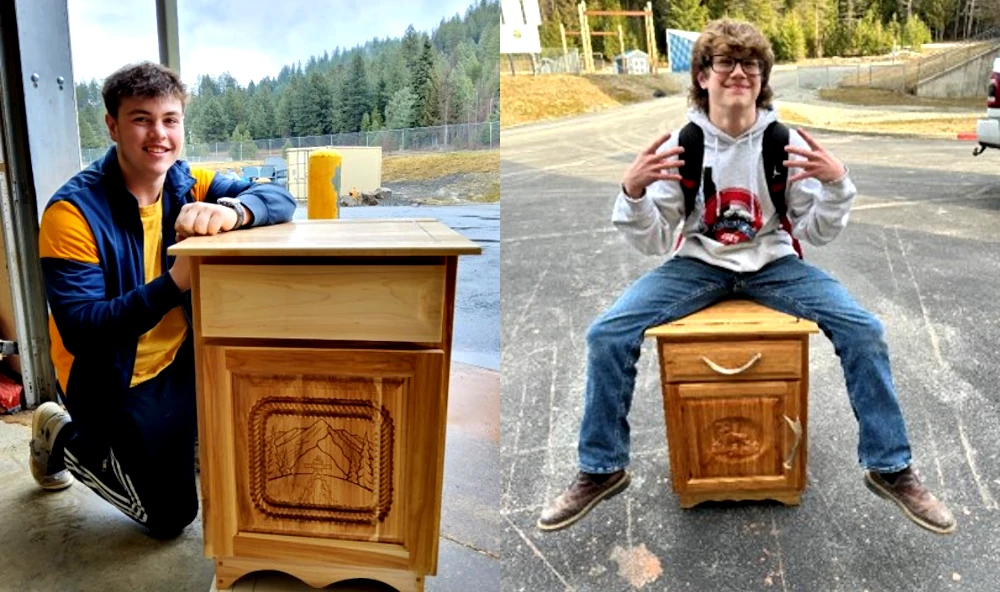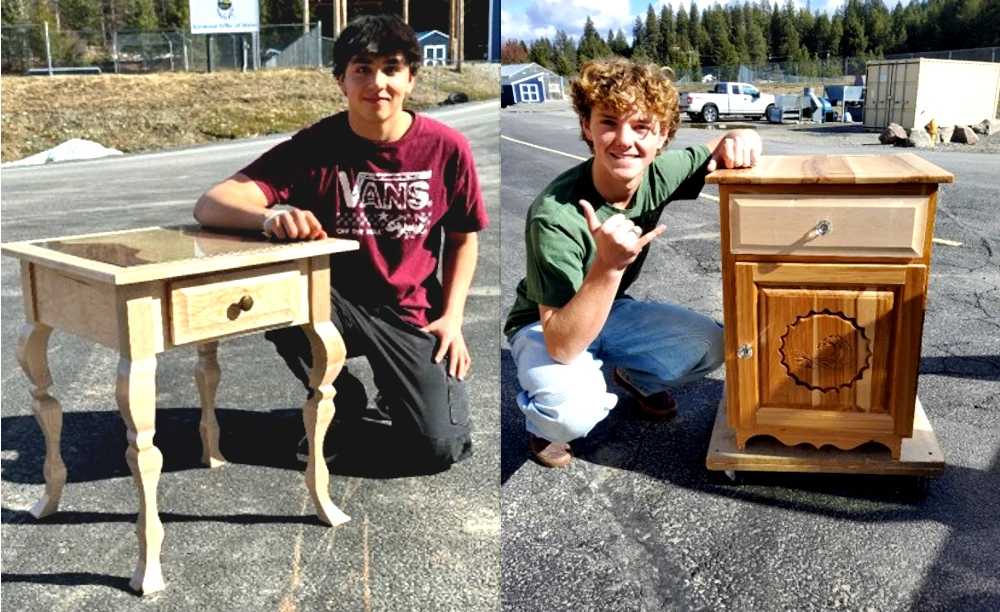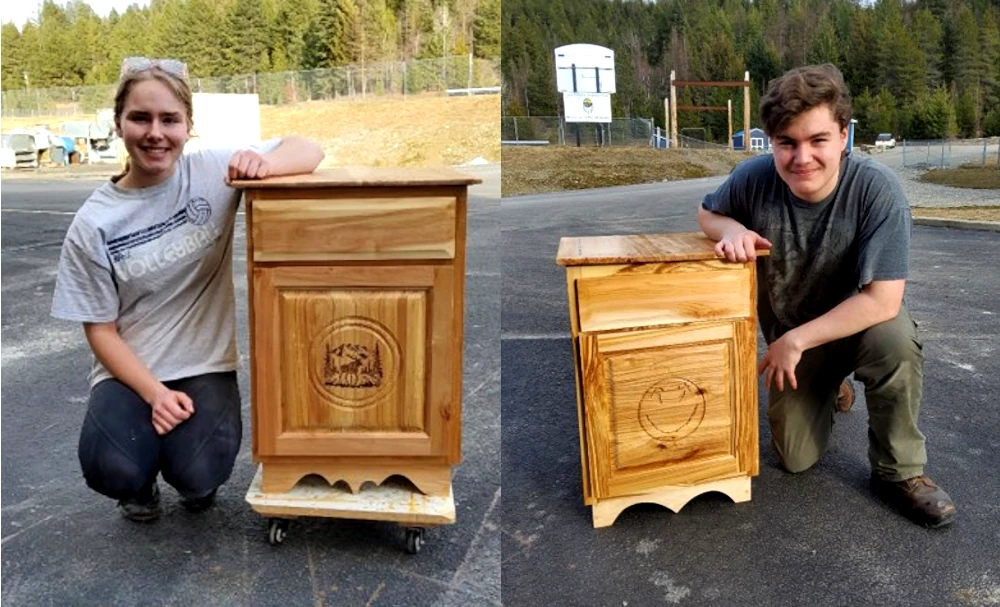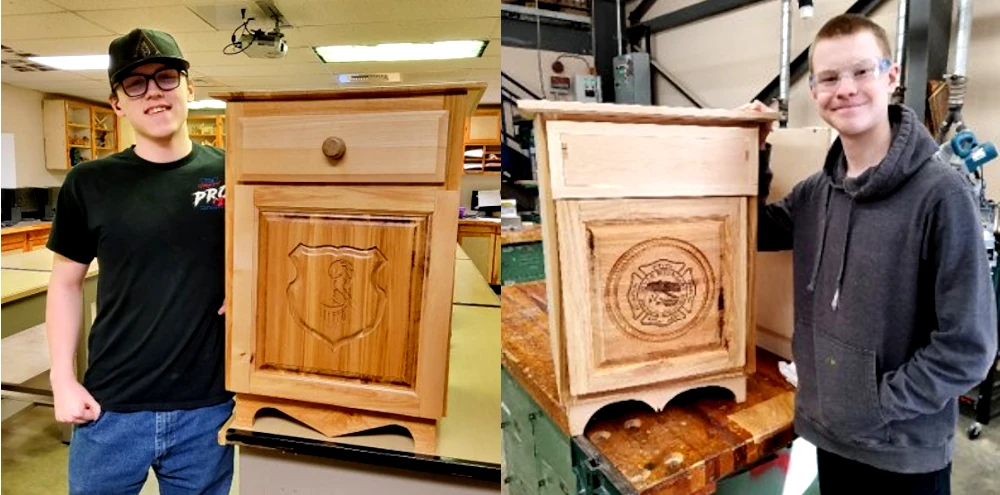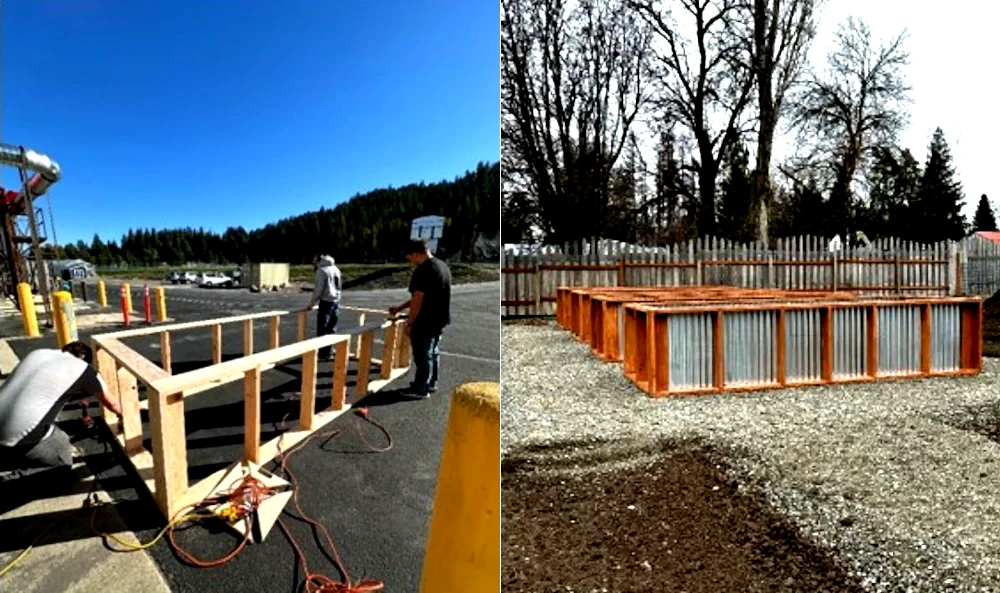
By Woodshop teacher Francis Carlson
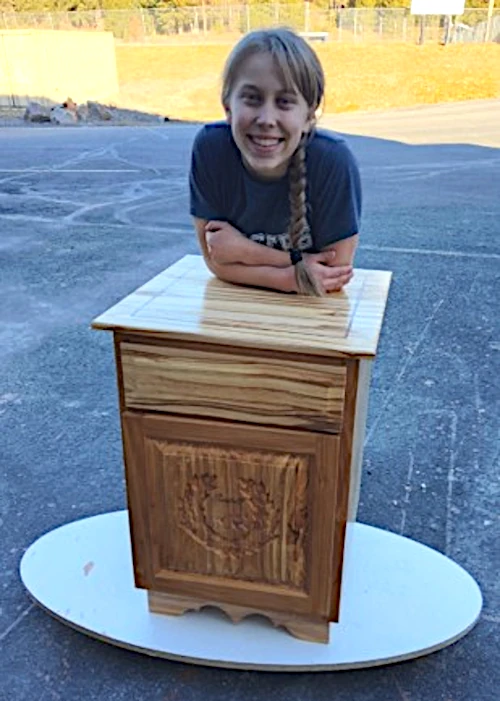
In a time when hands-on skills are often overshadowed by screens and software, a group of high school students in Bonners Ferry is quietly reviving the age-old art of woodworking — and doing it with style, precision, and Badger Pride.
This year, students enrolled in Cabinetmaking Levels 1, 2, and 3 have been working hard, turning raw lumber into works of functional art. These students aren’t just learning how to use tools — they’re learning how to solve problems, design with intention, and take immense pride in seeing a project through from blueprint to final polish.
One standout accomplishment this semester comes from Cabinetmaking 3 student Thomas Hoggan, who recently completed a table that rivals the craftsmanship of professional furniture makers. This advanced project wasn’t your typical shop-class build. The table includes a smoothly sliding drawer, a tabletop accented with glass and walnut wood detailing, and four elegantly curved legs inspired by a traditional furniture style known as “cabriole” — a design that dates back to 18th-century Europe and requires a high level of skill to execute.
The project was made using maple hardwood for its strength and clean finish, while the top features intricate walnut veneer work — thin slices of dark wood artfully arranged to contrast the lighter maple. A glass panel inset into the tabletop adds a modern touch and a bit of visual drama. The glass itself was supplied by Bonners Ferry Glass, showing the strength of community partnerships in supporting student success.
Meanwhile, Cabinetmaking 2 students spent much of the year constructing their first full-scale cabinet projects — nightstand-style pieces featuring both a functioning drawer and cabinet door. These builds incorporated high-quality materials, including Birch plywood supplied by Pro X Bonners Ferry, locally sourced Alder hardwood harvested and milled by Thick-n-Thin Beams in Bonners Ferry, and regional softwoods processed by Idaho Forest Group in Moyie Springs.
Far from simple beginner builds, these projects challenged students to apply a range of advanced cabinetry techniques such as dovetail drawer joinery, CNC carving (a computer-guided tool for detailed engraving), table saw coving to shape elegant curves, custom veneer inlays, and professional spray finishing — all of which showcase the increasing precision, creativity, and craftsmanship in their work.
Third quarter placed a strong emphasis on customization, allowing students to infuse their projects with personal meaning and creativity. Eivind Falck added rustic antler handles to his cabinet, reflecting his passion for the outdoors, while several students used the CNC machine to engrave doors with custom designs, patterns, and symbols. Cameron Kerttu went a step further by expanding his computer design skills and using resources outside of school to laser-engrave his cabinet door panel for a truly one-of-a-kind result. These projects are a powerful reminder that creativity holds just as much value in the shop as precision — and that well-crafted furniture can be both functional and deeply personal.
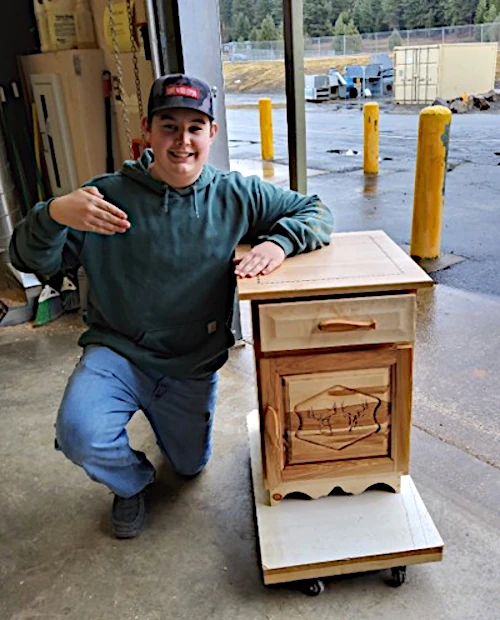
But perhaps the most meaningful project of the year brought students together for a greater cause. Cabinetmaking 1 and 2 students joined forces to complete a community service project for GROW! Community Gardens, an organization that promotes food security, sustainability, and wellness through gardening.
The students constructed seven large raised planter beds, each measuring 4 feet wide, 12 feet long, and 32 inches tall — an ergonomic design that makes gardening more accessible for all ages and abilities. The build integrated lessons from both the Cabinetmaking 1 and 2 curriculums, including layout planning, safe and efficient material processing, team-based production, and construction techniques that parallel cabinet box building — just on a larger scale.
The project was a unique opportunity for students to apply their technical skills in a real-world context, learn the importance of service learning, and experience the satisfaction that comes from giving back to the community. Residents interested in viewing the finished planter beds can find them located behind Trinity Lutheran Church, where the community garden is hosted. This partnership exemplifies the power of education, craftsmanship, and community working together.
As our community continues to grow and evolve, investments in hands-on learning as like the kind happening in this classroom — are investments in our future. The Cabinetry program is one of five Career and Technical Education (CTE) offerings available to Boundary County students in grades 8 through 12, including those enrolled in homeschool. The CTE programs provide real-world experience, practical career training, and help students discover new strengths — whether they plan to enter the workforce, start a business, or pursue college after graduation. These programs rely on multiple sources of funding, including support from the upcoming Maintenance and Operations Levy, which will appear on the May ballot. Continued access to opportunities in skilled trades and technical education ensures students are equipped with valuable, real-world skills. And if this quarter’s accomplishments are any indication, that future is looking solid, stylish, and built to last.
